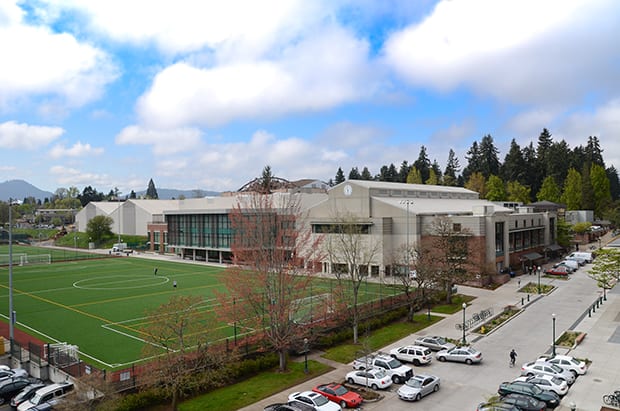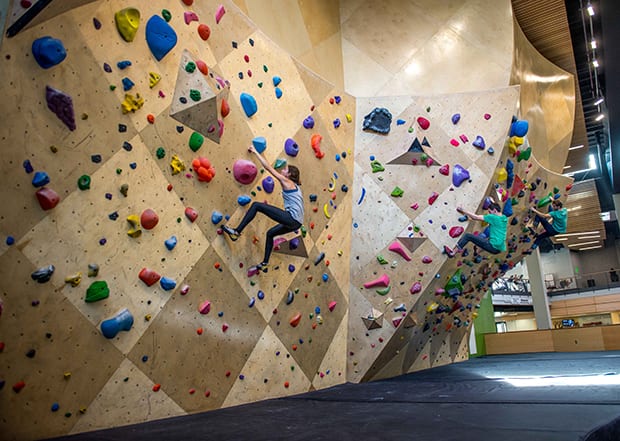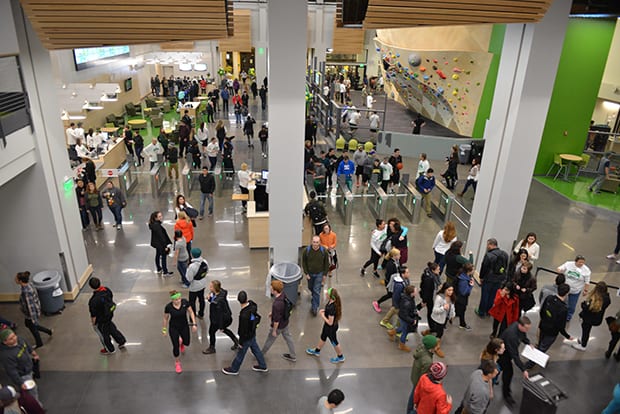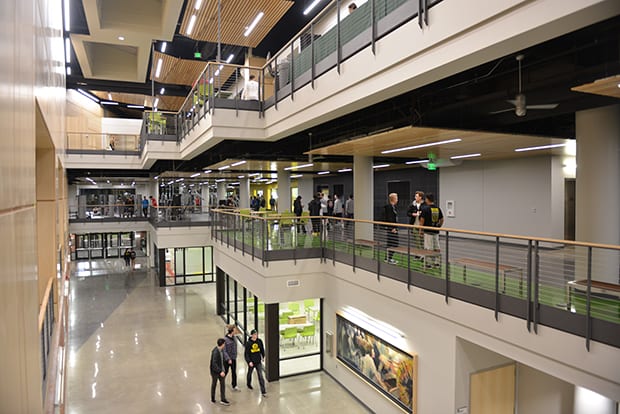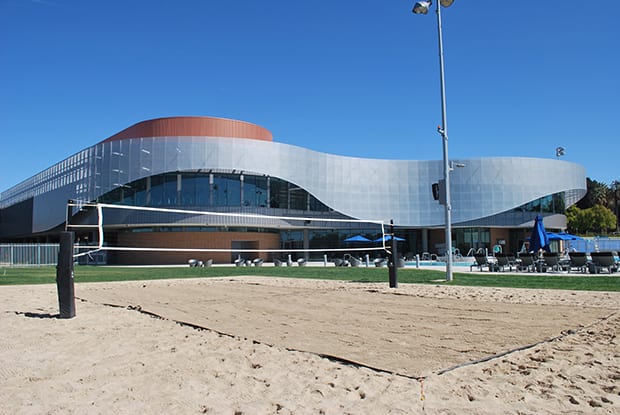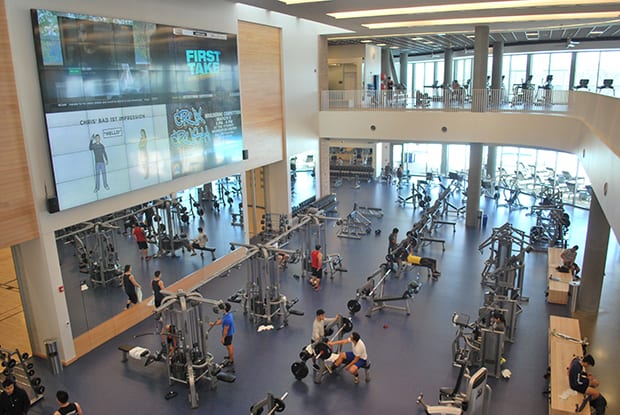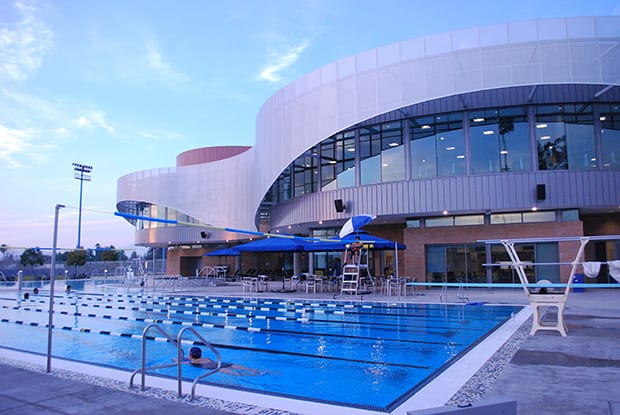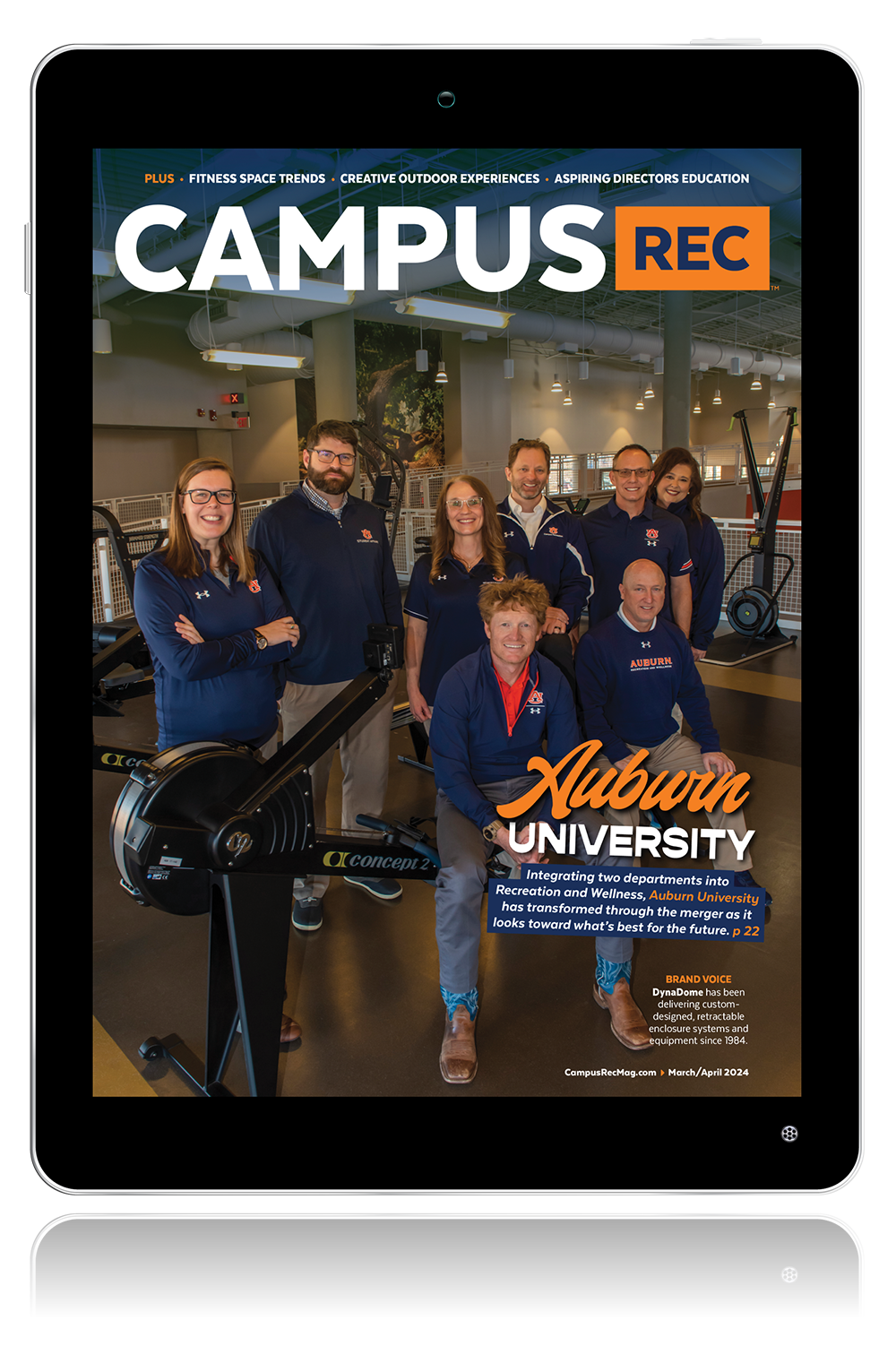Around 1.85 million square feet of building space is LEED Certified daily. LEED, or Leadership in Energy and Environmental Design, has become the most widely used third-party verification for green buildings. From homes to offices to university recreation centers, all buildings can pursue a LEED certification through earning points by addressing certain sustainability issues, such as reduction of greenhouse gases, water efficiency, using sustainable materials and more. Based on the number of points achieved, a project can receive one of four LEED ratings: Certified, Silver, Gold and Platinum.
An increasing number of recreation centers across the country are pursuing LEED certifications, allowing for the design, construction, operation and maintenance of resource-efficient and sustainable facilities. The University of California Riverside built a new Student Recreation Center in 2013, which achieved LEED Gold certification.
“I am very proud to be able to say that our facilities achieved LEED Gold certification,” said Lindy Fenex, the director of recreation at UC Riverside. “Our initial baseline was the LEED Silver certification, but working diligently with our partners we were able to understand exactly what we needed to do to reach our higher target, which was always GOLD certification.”
Fenex explained the process was complex, but with the help of their architects and engineers, they were able to earn enough points for LEED Gold. “The process involved the collection and reporting of a lot of diverse information. Things such as building design and operations practices were important, but also items such as the amount of soil imported and exported to the site and how much waste was transported away mattered as well,” explained Fenex. “So many items had the potential to add LEED credits — some were easier to achieve than others.”
Some of the sustainable features at the Student Recreation Center at UC Riverside include Haws Hydration Stations, which helps to eliminate disposable plastic water bottles, a recycle container program to separate land fill trash from compostable materials and recyclables, and installing more bike racks, air pumps and fix-it stations to encourage more ridership. “We have an ongoing retrofit program where our maintenance staff replaces electric light fixtures to LED,” added Fenex. “We are also replacing our older five-speed fan drive motors with newer, more efficient variable speed drive motors. We review and assess all of our mechanical components to try to be up to date with the latest technologies and stay on the leading edge.”
The University of Oregon also went through the LEED certification process for the Student Recreation Center. “Originally, we were aiming for Gold status, but as the project began to unfold, we realized we were very close to Platinum threshold,” said Kevin Marbury, the director of physical education and recreation at the University of Oregon. “There is a strong commitment to the environment and sustainability in the Pacific Northwest, and particularly at the University of Oregon. As the project progressed, we were mindful that anything added to the project would need to fit into the goal of attaining the highest possible LEED rating.”
The Northern Kentucky University Campus Recreation Center recently underwent a $48 million student-funded expansion and renovation project, increasing the size of the facility from 84,000 square feet to 169,000 square feet. Throughout the process, the Campus Recreation Center earned a LEED Gold certification, becoming the second building on campus to be LEED certified.
“NKU is a signatory to the American College and University Presidents’ Carbon Commitment,” said Matthew Hackett, the director of campus recreation at NKU. “LEED certification is part of a larger overall campus initiative to make all facilities greener on campus. Large capital projects in Kentucky are required to achieve LEED Silver, but NKU was able to incorporate enough features to achieve LEED Gold on the Campus Recreation Center.”
According to Hackett, students expressed the desire for the new facility to be environmentally friendly, so they incorporated numerous sustainable initiatives. This included a high-efficiency HVAC design that utilizes 80 geothermal wells, each 400 feet deep, that heat and cool the facility; fritted glass glaze, which reduces heat gain from the sun while allowing in natural light; large gymnasium ceiling fans; occupancy sensors; finishes with low emissions of Volatile Organic Compounds; low-flow showers and faucets; and landscaping design that reduces irrigation needs.
While sustainable initiatives have extreme benefits, Fenex explained there were certain challenges throughout the implementation process. There were initial investment costs with certain projects. “In our retrofit program, we have to balance future energy/utility savings against the initial cost,” she said. “Getting an accurate read on the time to ROI is critical in making sure that your operations can support your initiative over the time required. Similar to our recycling program, we had to purchase the containers up front.”
And while developing an environmentally friendly facility has numerous benefits, it is essential to remember the No. 1 priority: the students. “The biggest challenge was making sure we weren’t sacrificing function for the sake of LEED points,” said Marbury. “We knew we were intent on building a sustainable facility, however, we were not interested in things that did not add value to the project, but instead helped with LEED classification.”
Even though developing and implementing all of these initiatives takes time and resources, earning a LEED certification was a priority of UC Riverside and is something worth considering at your university. “Sustainability is our priority, because we believe that we are stewards of the future and as such, it is our responsibility to be mindful of how we manage our resources and what the long-term impact of our action on the world will be,” said Fenex. “Perhaps it is a happy coincidence, but we have found that our sustainability practices generally have made good economic sense for our bottom line as well.”



